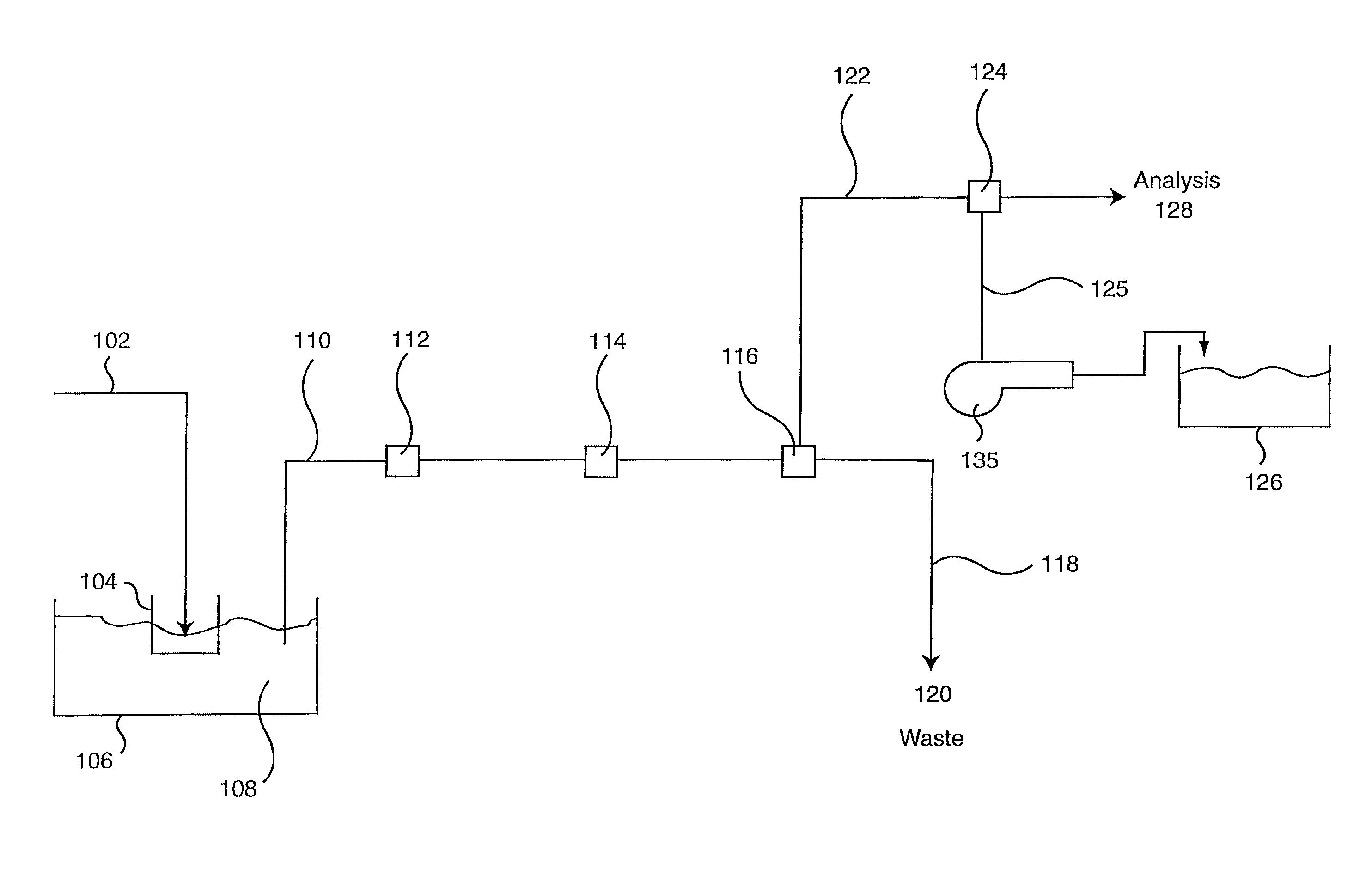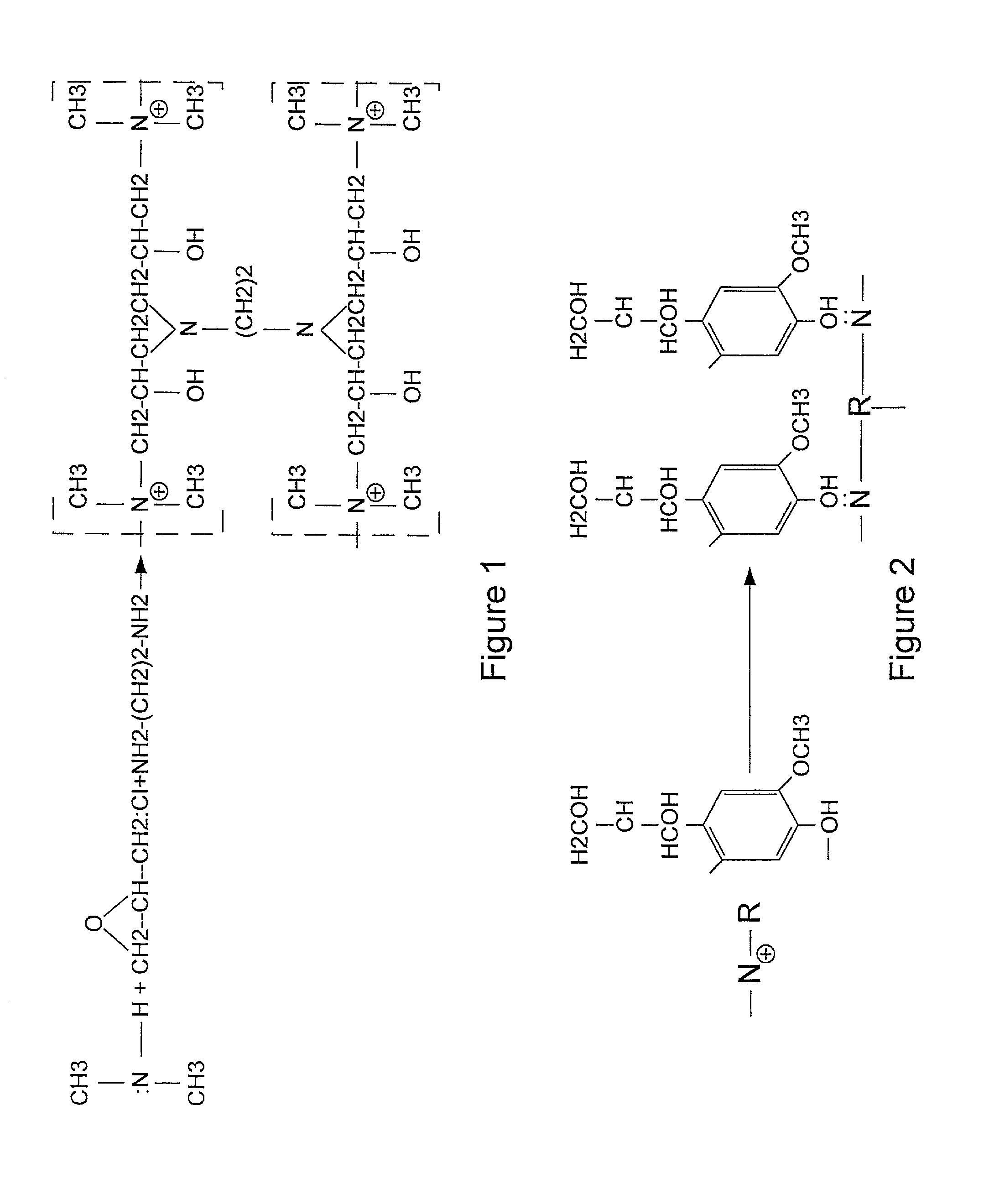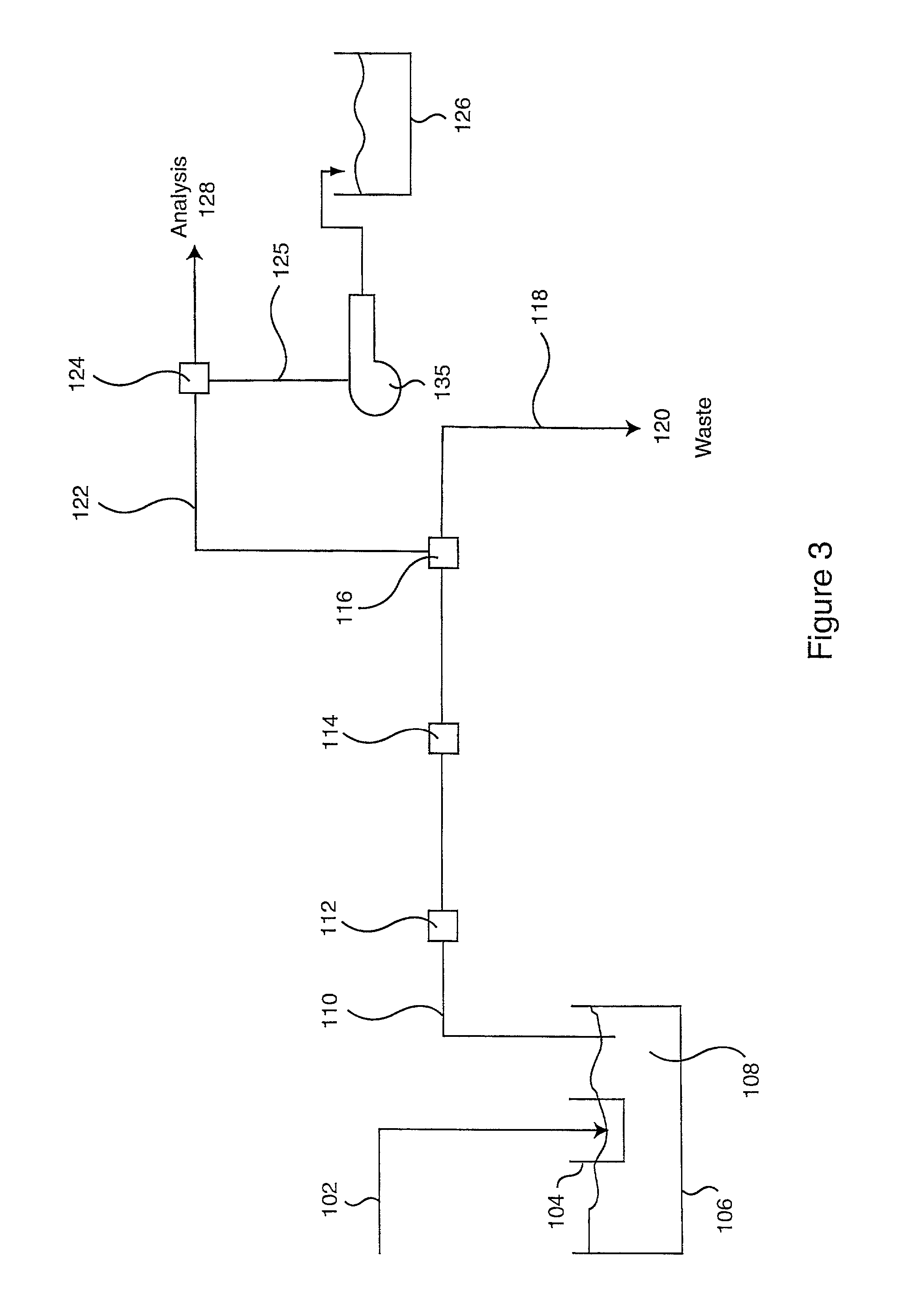Compositions and processes for reducing true color in waste liquids
- Summary
- Abstract
- Description
- Claims
- Application Information
AI Technical Summary
Benefits of technology
Problems solved by technology
Method used
Image
Examples
example 1
[0040] The following experiments were performed to test a 1:1 mixture of epichlorohydrin amine condensate to aluminum chlorohydrate utilizing 930 ml of bleach plant effluent and 70 ml of 60% black liquor (bleached Kraft mill).
[0041] Initial color: 1,500 Pt / Co units
1 Dose (ppm) Color (Pt / Co units) 10 1,350 20 1,300 30 1,275 40 1,100 50 900 60 820 70 750 80 675 90 610 100 460 120 395
[0042] This example illustrates the effectiveness of the mixture in reducing color of pulp mill effluent. The color reduction generally increases as a function of increasing dosage.
example 2
[0043] Plant trial; 900 tons per day bleached Kraft mill.
[0044] Flow=14,000,000 gallons per day
[0045] True color=1,450 Pt / Co units.
[0046] Dose=100 ppm of a 1:1 mixture of epichlorohydrin amine condensate to aluminum chlorohydrate.
[0047] Primary clarifier effluent color=450 Pt / Co units 24 hr. aeration, followed by secondary clarification, True color=250 Pt / Co units
[0048] This example demonstrates that the chemicals and processes of the present invention can be scaled up to function efficiently in pulp and paper mills.
[0049] Thus, there have been described several embodiments of compositions and processes for reducing true color in a liquid effluent, such as a pulp or paper mill effluent containing lignins. It will be appreciated that the present invention may be used in reducing the true color of many types of effluents used or produced during the pulping or paper milling process. For example, the present invention may be applied to reduce the true color of Kraft pulping effluents; b...
PUM
| Property | Measurement | Unit |
|---|---|---|
| Percent by mass | aaaaa | aaaaa |
| Weight | aaaaa | aaaaa |
| Color | aaaaa | aaaaa |
Abstract
Description
Claims
Application Information
 Login to View More
Login to View More - R&D
- Intellectual Property
- Life Sciences
- Materials
- Tech Scout
- Unparalleled Data Quality
- Higher Quality Content
- 60% Fewer Hallucinations
Browse by: Latest US Patents, China's latest patents, Technical Efficacy Thesaurus, Application Domain, Technology Topic, Popular Technical Reports.
© 2025 PatSnap. All rights reserved.Legal|Privacy policy|Modern Slavery Act Transparency Statement|Sitemap|About US| Contact US: help@patsnap.com



